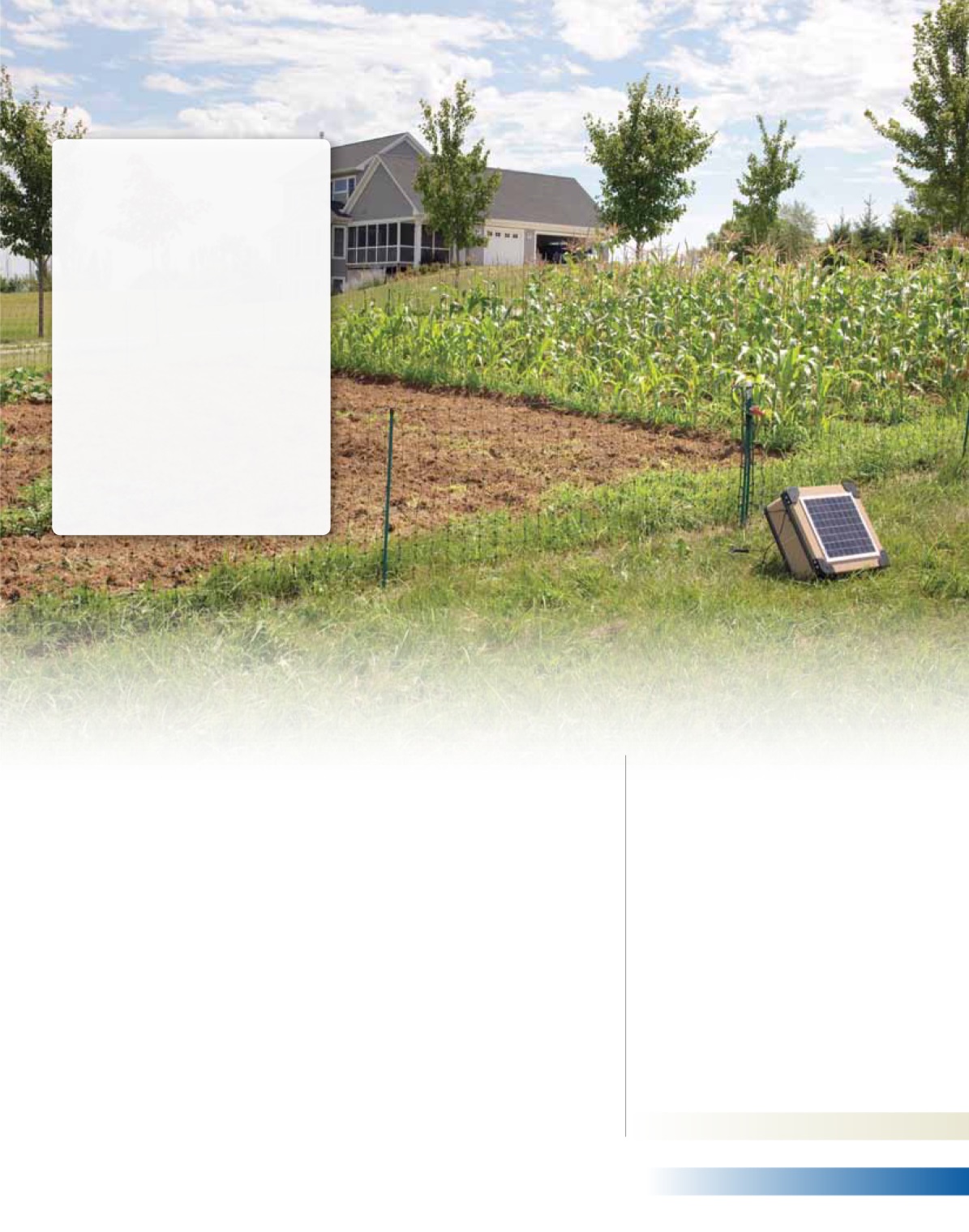
1.Total length of fence:
This is
actually of minimal importance!
Why? Because even small units
will energize long fences and stop
animals—
if there are no leaks of
energy to the soil via weeds or
poor insulators.
2. Amount of wet/green weed
contact
with the energized wires.
Very important!
1/4 mile of high-
tensile wire that’s covered with
weeds and is only 6" above wet soil
may leak or drain away more energy
than a 3-joule energizer can provide!
3. How high above the soil will the
lowest live wire be?
Low wires (6")
will have much more leakage from
weed contact. More leakage means
you need energizers with a higher
joule output at 200
Ω
.
4. Species to be contained or
deterred:
Species vary in their
internal resistance (in ohms).
Fence FAQs........................................ p. 80
2 Year Warranty................................ p. 81
About Our Energizers............ pp. 82–84
Energizers & Kits
0.12 Joule.......................................... p. 84
0.5 Joule............................................ p. 85
1 Joule............................................... p. 86
2 Joules............................................. p. 87
3 to 5 Joules...................................... p. 88
Special and/or Large.................... p. 89
Solar FAQs............................... pp. 90–92
Solar Energizers & Kits......... pp. 93–97
Solar Panels & Accessories........... p. 98
Energizer Chart & Data....... pp. 99–101
Batteries & Accessories............ 102–103
Energizer
Table of Contents
Wide-impedance units (or large
low-impedance ones) are best for
species with high internal resistance
(poultry, goats, deer). Cattle, horses
and domestic pigs have much lower
internal resistance.
5. Climate:
Low-impedance units are
ideal for places where the grass stays
green. Wide-impedance units are
superior when grass turns brown.
6. Soil:
Wide-impedance units are
better for rocky and/or sandy soil.
Low-impedance units are better for
clay and/or loam soils.
7. Power source:
110 AC plug-in units
are best if fence is close to power. If
not, look at the battery/solar options.
8. Cost:
The most expensive energizer
is the one that isn’t big enough for your
needs and results in escaped animals or
predator attacks.
Issues to consider before buying an energizer:
Essential energizer advice…
• Buy a larger energizer than
necessary. If the fence works,
most folks will buy more fence—
and need a larger energizer.
• Use a fence tester to check the
voltage—often.
• Install a ground rod(s)—included
in our kits.
• Don’t go below 40% charge level
on a lead acid battery.
• Use insulated wire that is
specifically designed for electric
fences. (
See p.
136.)
• Never connect a fence directly to
a 110v AC outlet. It can be very
dangerous. Use a fence energizer.
Fence Energizers
www.premier1supplies.com• 1-800-282-6631
ENERGIZERS & SOLAR PANELS 79
Continued on pp. 80–84









